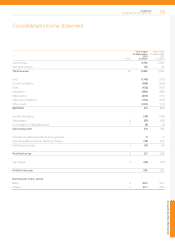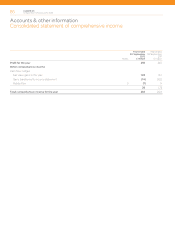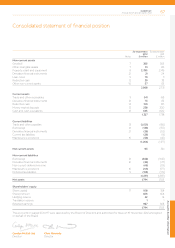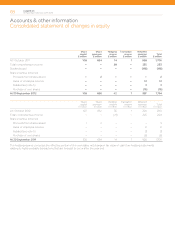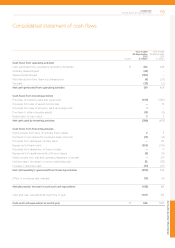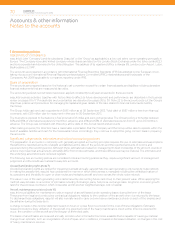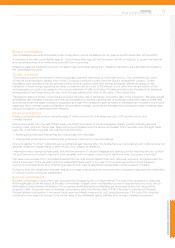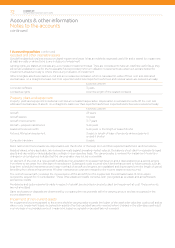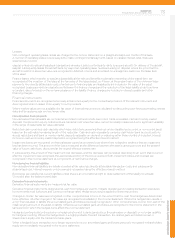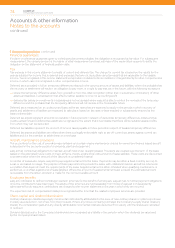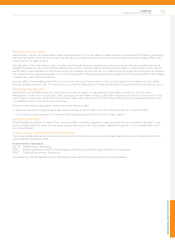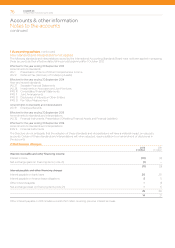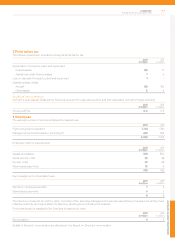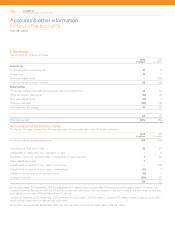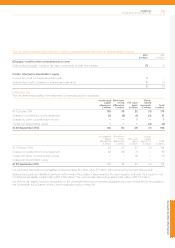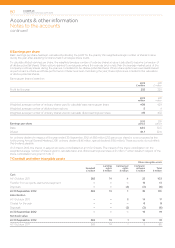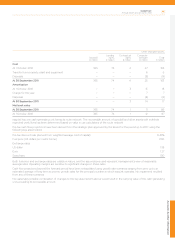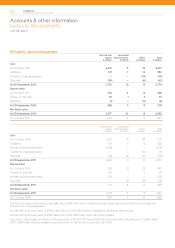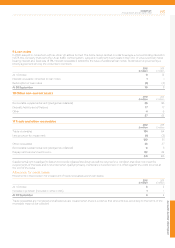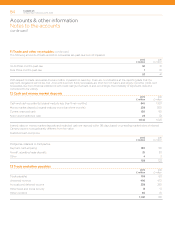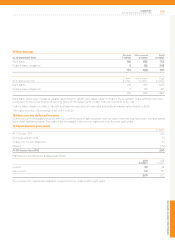EasyJet 2012 Annual Report Download - page 77
Download and view the complete annual report
Please find page 77 of the 2012 EasyJet annual report below. You can navigate through the pages in the report by either clicking on the pages listed below, or by using the keyword search tool below to find specific information within the annual report.
Share-based payments
easyJet has a number of equity-settled share incentive schemes. The fair value of share options is measured at the date of grant using
the Binomial Lattice option pricing model. The fair value of awards under the Long term Incentive Plan and Share Incentive Plan is the
share price at the date of grant.
The fair value of the estimated number of options and awards that are expected to vest is expensed to the income statement on a
straight-line basis over the period that employees’ services are rendered, with a corresponding increase in shareholders’ equity. Where
performance criteria attached to the share options and awards are not met, any cumulative expense previously recognised is reversed.
The social security obligations payable in connection with grant of the share options is an integral part of the grant itself and the charge
is treated as a cash-settled transaction.
easyJet settles share awards under the Long Term Incentive and Share Incentive Plans by purchasing its own shares on the market
through employee share trusts. The cost of such purchases is deducted from retained earnings in the period that the transaction occurs.
Segmental disclosures
easyJet has one operating segment, being its route network, based on management information provided to the Executive
Management Team; which is easyJet’s Chief Operating Decision Maker. Resource allocation decisions are made for the benefit of the
route network as a whole, rather than for individual routes within the network. Performance of the network is assessed based on the
consolidated profit or loss before tax for the year.
Revenue is allocated to geographic segments on the following basis:
→Revenue earned from passengers is allocated according to the location of the first departure airport on each booking;
→Commission revenue earned from partners is allocated according to the domicile of each partner.
Assets held for sale
Where assets are available for sale in their current condition, and their disposal is highly probable, they are reclassified as held for sale
and are measured at the lower of their carrying value less costs to sell. Depreciation ceases at the point of their reclassification from
non-current assets.
Impact of new standards and interpretations
The following standards and interpretations issued by the International Accounting Standards Board have been implemented for the
year ended 30 September 2012:
Amendments to standards
IAS 24 Related party disclosures
IFRS 1 First-time Adoption of IFRS (Hyperinflation and Removal of Fixed Dates for First-time Adopters)
IFRS 7 Financial Instruments: Disclosures
The adoption of these standards and interpretations has not led to any changes in accounting policies.
Accounts & other information
easyJet plc
Annual report and accounts 2012 75


